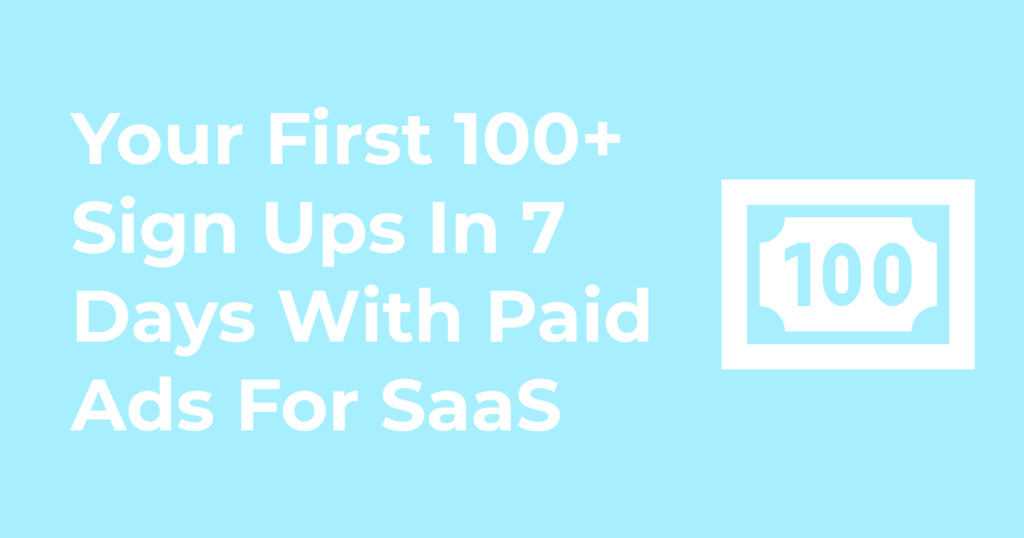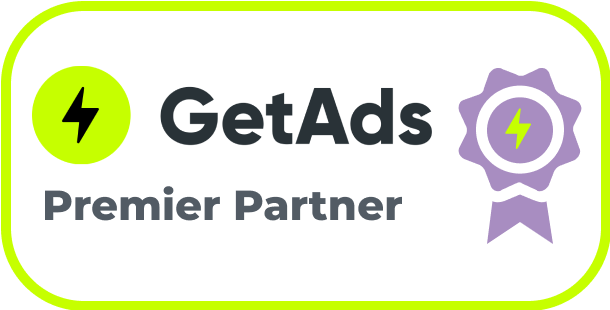Paid advertising is sometimes a marketing channel that SaaS founders either tend to overlook or are afraid will not work.
However, when approached the right way you’re able to see pretty significant gains with paid ads for SaaS.
In short, by advertising for many SaaS companies we’ve learned quite a bit.
The most important lesson being that, you must have proof of concept, if not, you should figure that out first.
However, this article is not about finding the proof concept.
So let’s dive into what we really want to show you…
Like advanced strategies you can implement for your SaaS company, platform features that will allow you to have an edge, experimenting with variables to understand what resonates best with your target audience, and using multiple platforms to become omnipresent to your audience.
The beautiful thing about Google Ads is that people are already looking for your solution.
Your SaaS can benefit from this whether your target audience is looking for it as a software or simply looking for the solution you’ve conveniently packaged into a product.
GOOGLE SEARCH ADS FOR SAAS
If you’re hesitant about using Google Search Ads for your SaaS, don’t be, it could be the greatest customer acquisition tool that could’ve happened to you, really.
Many underestimate the power of paid search because they can’t wrap their heads around spending money to get people to their site, but the other alternative is SEO, which takes quite some time to kick in.
Paid Search is immediate, turn the ads on and you could start seeing results within the minute, given your account has been structured correctly and all things are working as they should.
A good rule of thumb for SaaS companies, don’t put much emphasis on the CPC when wanting to understand return on ad spend (ROAS). While the average CPC for most SaaS keywords seems high compared to the monthly cost of SaaS products, it’s important to keep things in perspective when you calculate return on ad spend.
If you offer a SaaS product at $49 per month and your cost of acquiring a paying customer is $150, it’s easy to write the campaign off as a failure.
However, the correct way to examine ROI for a SaaS product is to look at the lifetime value (CLV) of the customer being acquired.
TAKE MARKET SHARE FROM YOUR COMPETITION IMMEDIATELY
Say your product is relatively new and there have been other players in the space before (similar to our case), wouldn’t you want to piggyback ride off of the traction that your competitors have already gained?
We like to think of it this way, if someone already paved the way, there are usually very few reasons to pave a new one, especially if you’re going in a fairly similar direction.
Leverage their brand to make gains for your own, bid on your competitors’ keywords, showcase your competitive advantage and value proposition in your ads and see how easy it is to start seeing their customers/prospects come your way instead.
Here’s how a client of ours was able to generate over 7% conversion rate for our client through strategic competitor campaigns.

LEVERAGE RLSAs TO CUT YOUR ACQUISITION COSTS FURTHER
Who doesn’t want to have lower acquisition costs?
Sure, you’ve got the budget, but if you can cut down, why not?
It’s not about spending the marketing budget and hoping for the best. It’s about spending the marketing budget as efficiently as possible, and that’s what we aim to do for the companies we work with.
RLSAs or Remarketing List for Search Ads are one of the most powerful ways to cut down costs and increase conversion rates, especially when you have a decent amount of people going to your website (need a minimum of 1000 unique people in your lists).
For example, when people leave your site without completing a conversion, remarketing lists for search ads help you connect with these potential customers when they continue looking for what they need. You can set your bids, create ads, or select keywords keeping in mind that these customers have previously visited your website.

RUN EXPERIMENTS TO LEARN WHAT WORKS BEST
Testing should always be part of your strategy, as it allows you to learn more about what works best, understanding your target audience, and give you actionable data you can turn to when making decisions.
What’s beautiful about experiments, also known as A/B tests, is that they don’t require a ton of work and are relatively simple to set up once you get the hang of it.
Our client underwent a somewhat drastic price increase, so we wanted to understand how pricing influenced people with interest in their solution prior to reaching the landing page.
How did we do this you ask?
We set up an experiment, where 50% of the searches showed ads with pricing extensions, and the other 50% showed ads without the pricing extensions (so we knew they were not aware of the price beforehand).
Another reason to constantly run experiments is that we as humans, tend to assume due to our biases, so it’s always good to double-check with hard data.
As you can see, the price was influencing the decisions of people, as we were able to lower the cost per conversion by almost $2 and increase the conversion rate by almost 4%.

USE MULTIPLE PLATFORMS TO BECOME OMNIPRESENT
If you’ve ever seen “Attention = Revenue” you’ve seen the truth. The more people know about your product or company the more likely they are to take action on your offerings, it’s that simple.
Leveraging social media alongside search platforms is one of the best ways to stay relevant and contextual to your audience, all while providing value in some way, shape, or form.
Retargeting campaigns play a huge role in omnipresence and will aid when it comes to lead generation and signs ups for your SaaS, not to mention more often than not they tend to do so in a more cost-effective way because people are already familiar with your company.
SEGMENTING YOUR AUDIENCES
Coming up with different market segments will allow you to understand which segments are higher performing than others, you’ll also be able to double down on what’s working and cut back on what’s not.
When you group all interest, age groups, and many other data points into one or fewer audiences/ad sets you can’t easily differentiate why something may or may not be working.
This makes it near impossible to optimize your campaigns properly.
When you segment it’s also easier to scale for the same reason, you’ve got a better understanding of what’s driving results and it’s easier to test new variables when you’ve identified your winning ad sets early on.

LEVERAGING PAST TRAFFIC DATA
Most advertising platforms nowadays provide you some sort of pixel or tag that you can place on your site/landing pages/funnels to keep track of traffic coming to your site, not just that, but you can also keep track of specific actions taken, pages visited, and time spent.
In this case, we were able to leverage both the Google Analytics tag and Facebook Pixel to take advantage of past website traffic in order to better optimize our clients’ campaigns.
How it was used and how you can use it too:
- Traffic data was used to create RLSAs and segmenting people that have been to the website previously
- Traffic data was used for retargeting campaigns segmented out by time frame
- Create custom audiences
- Create lookalike audiences
- Exclude people that had already signed up
CONCLUSION
By using an omnipresent approach, leveraging the competition’s traction, understanding how to use historical data, audience segmentation and proper account structure on each respective platform you too can acquire 100+ new sign-ups for your SaaS just seven days after launching your paid ad campaigns.







